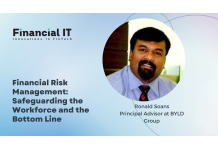Unlocking Growth - The Vital Role of Credit Risk Monitoring for Businesses and Lenders

- Content Creator, at White Press
- 14.09.2023 05:30 pm #RiskManagement
Credit risk monitoring is not merely an accessory but rather the sentinel that guards against the perils of default and financial instability. In this extensive article, we will delve deep into various credit risk monitoring use cases, elucidating their essence, and highlighting why they are crucial for businesses and lenders.
Grasping Credit Risk Monitoring
Before we delve into the intricate use cases, let us first establish a comprehensive understanding of credit risk monitoring use case examples. As provided by the experts at Enigma, it is a systematic, continuous process that revolves around the evaluation of a borrower's creditworthiness. This evaluation encompasses an array of dimensions, including their financial health, payment history, and adherence to contractual obligations.
Credit risk monitoring deploys an arsenal of tools and data sources to meticulously scrutinize these factors. The ultimate objective is to detect any early warning signs of impending financial distress, thereby empowering lenders and businesses to adopt proactive measures to mitigate potential risks.
Use Case 1: Lending Decisions
Credit risk monitoring assumes several pivotal roles, and one of its primary applications is in lending decisions. Whether it's traditional banks or online lending platforms, creditworthiness serves as the bedrock upon which loan terms are built, dictating aspects like interest rates and repayment schedules.
By scrutinizing an applicant's credit score, credit history, and current financial stability, lenders can make informed decisions. This data-driven approach ensures that loans are extended to borrowers who exhibit a higher likelihood of repayment, consequently reducing the risk of defaults.
Use Case 2: Portfolio Management
Portfolio management is a multifaceted challenge for financial institutions and investors. Credit risk monitoring assumes a crucial role in this domain by offering ongoing insights into the portfolio's health.
A proactive approach to monitoring the credit quality of borrowers within the portfolio enables lenders to identify potential issues at an early stage. This timely intervention minimizes the impact of defaults and optimizes the overall performance of the portfolio.
Use Case 3: Vendor and Supplier Assessment
Credit risk monitoring extends beyond lending scenarios; it plays a pivotal role in the assessment of vendors and suppliers. Businesses frequently rely on an intricate network of suppliers to ensure the uninterrupted flow of goods and services.
Through vigilant monitoring of the financial stability and payment behavior of suppliers, businesses can swiftly identify any signs of financial distress that may imperil the supply chain. This proactive stance allows for timely adjustments and contingency plans, ensuring the sustained continuity of business operations.
Use Case 4: Compliance and Regulatory Requirements
In the financial sector, regulatory compliance is not optional but obligatory. Credit risk monitoring comes to the aid of businesses and lenders in meeting these regulatory requirements.
Regulators often mandate that financial institutions maintain a specified level of credit quality within their portfolios. Credit risk monitoring equips businesses with the necessary data and tools to demonstrate compliance with these stringent regulations, thereby helping them steer clear of costly fines and regulatory scrutiny.
Use Case 5: Early Warning System
Credit risk management is inherently reliant on proactivity. An early warning system, empowered by credit risk monitoring, functions as a vigilant radar, detecting nascent issues on the horizon.
By meticulously analyzing a borrower's financial metrics and payment behavior, this system can flag warning signs such as deteriorating financial health or irregular payment patterns. Lenders and businesses can then take timely corrective actions, thereby averting situations that might otherwise escalate into defaults.
Use Case 6: Investment Decisions
Furthermore, credit risk monitoring assumes a pivotal role in investment decisions, guiding investors in making well-informed choices regarding bonds, stocks, and other financial instruments.
This information equips investors with the necessary insights to formulate investment strategies and safeguard their portfolios by assessing the creditworthiness of issuers.
Why Credit Risk Monitoring Matters - A Professional Perspective
We have dissected a multitude of use cases, each bearing testimony to the significance of credit risk monitoring in the professional domain. Now, let's delve into why this facet of financial management is indispensable for professionals.
Risk Mitigation
At its core, credit risk monitoring serves as a potent risk mitigation strategy. By perpetually evaluating the creditworthiness of borrowers, vendors, and suppliers, businesses and lenders can spot potential risks and address them proactively. This approach minimizes financial losses and ensures business continuity by mitigating risks before they escalate.
Informed Decision-Making
Informed decision-making is the linchpin of sound financial practices. Credit risk monitoring enriches businesses and lenders with the requisite data and insights to make informed choices. Whether it involves sanctioning a loan, managing a portfolio, or selecting a supplier, the data-driven approach facilitates prudent decision-making.
Regulatory Compliance
In the intricate financial landscape, regulatory compliance is non-negotiable. Credit risk monitoring is the conduit that guarantees businesses and lenders adhere to these regulatory requirements. It furnishes them with the data and tools essential for demonstrating compliance, thereby obviating the risk of punitive measures.
Business Continuity
In the era of interconnected global supply chains, business disruptions can have cascading repercussions. Credit risk monitoring ensures business continuity by enabling early identification of potential issues within the supply network. Timely adjustments and contingency plans mitigate risks and ensure the smooth functioning of operations.
Portfolio Optimization
For lenders and investors, portfolio optimization is an overriding objective. Credit risk monitoring assists in this endeavor by identifying underperforming assets within portfolios and facilitating corrective actions. This proactive approach enhances portfolio performance and minimizes losses.
Investor Confidence
In the quest for capital, investor confidence is paramount. Robust credit risk monitoring practices enhance transparency and instill confidence in potential investors, thereby improving access to funding.
The Vanguard of Financial Stability
Credit risk monitoring stands as an unsung hero in the intricate realm of finance, diligently safeguarding the interests of businesses and lenders. Its manifold use cases underscore its versatility and importance in the contemporary professional landscape.
From lending decisions to portfolio management, regulatory compliance, and investment choices, credit risk monitoring empowers businesses and lenders to base financial decisions on data. This data-driven approach minimizes risks and maximizes growth opportunities. It serves as the vanguard of financial stability, perpetually vigilant against the uncertainties lurking in the world of finance.
For businesses and lenders striving to thrive in the increasingly complex and interconnected financial ecosystem, credit risk monitoring is not merely an option; it is a strategic imperative. By wholeheartedly embracing these practices, organizations can confidently navigate the financial terrain, resiliently seizing growth opportunities while mitigating risks.
























